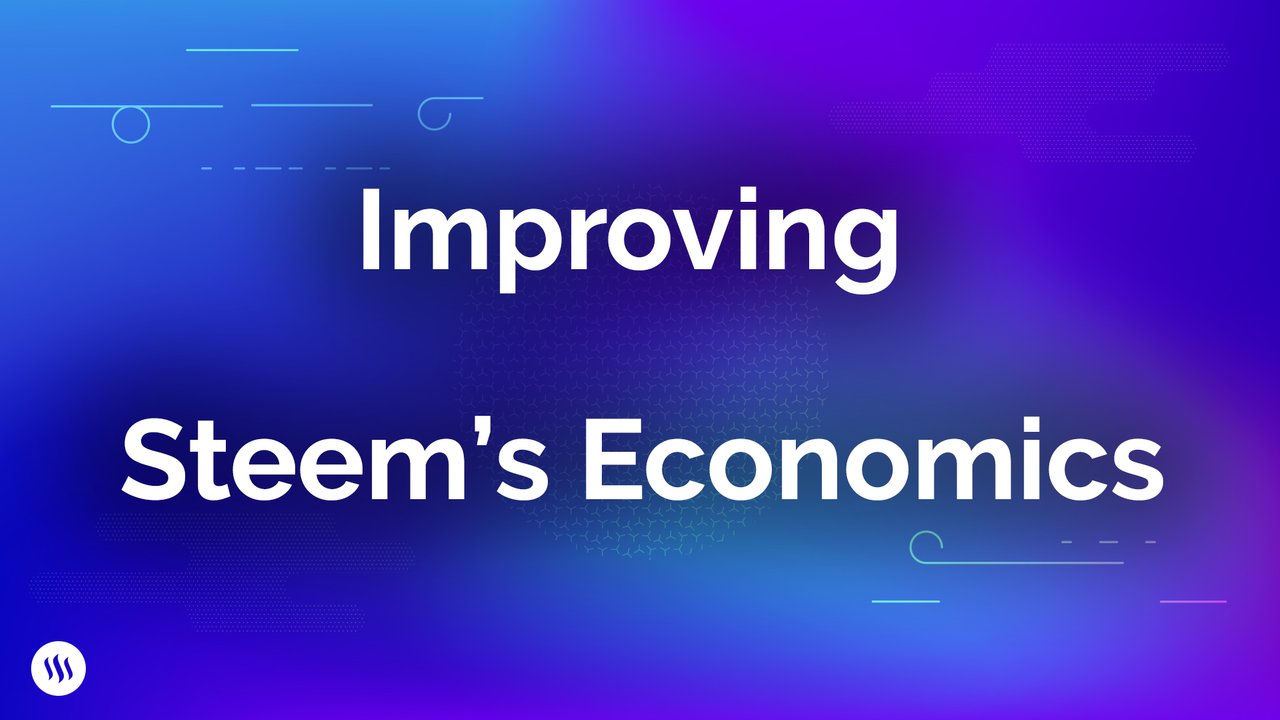
Hello Steemians, today we would like to disclose our public support for a proposal that we believe would improve the economic incentives built into Steem. The Steemit team recently met to discuss this issue. We agreed on the nature of the problem, and more or less agreed with the proposal presented by the Steem user @trafalgar which we will refer to as the “Economic Improvement Proposal” or “EIP.”
Improving Content Discovery
The problems that we believe should be solved are that of self-voting, passive delegation to bidbots (instead of participation in content discovery), spam (especially microspam), and abuse. These problems undermine one of the core unique value propositions of the platform; proof-of-brain. People generally gravitate towards what is the most profitable thing for them to do when there is monetary incentive.
The goal of these economic changes would be to move Steem closer to delivering on the promises stated in the whitepaper of unearthing high quality content by making it more profitable for people to actively curate, and less profitable to self-vote and delegate one’s Steem Power to bid bots.
Our Focus
Right now our focus remains 100% on improving steemit.com, Communities, MIRA, finalizing the Steem Proposal System Hardfork (HF21 or the “SteemDAO”), and preparing to switch to SMTs. We do not have any plans to begin working on any code relating to these economic changes. But we do believe that this is a conversation worth having and one that we would be happy to participate in. Ultimately, the decision of when to begin work on these improvements, and in which hardfork to include them, will be up to the Steem community and the Witnesses they elect to approve Hardforks.
The EIP has 3 components all of which we believe must be implemented in tandem in order to deliver the desired effect. If you’re interested in learning more about the rewards curve and the options for improving it, @vandeberg (Senior Blockchain Engineer at Steemit) has published a more technical exploration of the subject.
- Moving from a linear rewards curve to a convergent linear rewards curve. A convergent linear rewards curve would start out superlinear, providing minimal gains at first, and smoothly become linear as more votes are made. Users that are interested only in maximizing the return on their Steem Power, instead of benefitting the platform through thoughtful curation, often engage in practices such as self voting or delegation to bid bots. The proposed curve incentivises concentration of votes on to fewer pieces of content, which increases the visibility of such counterproductive behavior. Alternatively, users could choose to act more subtly by spreading stake across more, but smaller, votes at the cost of a suboptimal return. We cannot eliminate such behavior entirely, but we can make it less economically viable.
- Increasing the percentage of rewards that are distributed to curators. One of the problems with Steem as it stands is that there is a strong incentive to self-vote. The more rewards are distributed to curators the less incentive there is to self-vote. At the same time, if curation is improved, then those content creators who are currently submitting great content which isn’t getting seen, should stand to benefit as that content will be more likely to get unearthed.
- Create a separate “downvote pool.” Downvotes are a critical component for regulating Steem, but there is no incentive to render them because they are not rewarded. In fact, they cost voting mana which disincentivizes the use of the downvote. This creates more opportunities for self-voting abuse as it reduces the likelihood that this behavior will be countered. By adding a small pool for downvotes that is consumed prior to consuming voting mana, users are more free to downvote content as a curation mechanism without losing out on potential rewards themselves.
Feedback
Discussions like this have been extensive in the past and we want to share our opinion and continue the conversation started by community member @trafalgar. Our plans have not changed. We are working to finish auditing the SPS Hardfork, release a testnet, and make a public announcement which gives everyone (including exchanges) 30 days to review that code.
Our hope with the EIP is just to highlight the conversation so that the Steem community has time to come to a consensus about whether they want these changes, and what they feel is the best timing as far as including the changes in a future hardfork.
Let us know your thoughts on the Economic Improvement Proposal in the comments section below.
The Steemit Team
